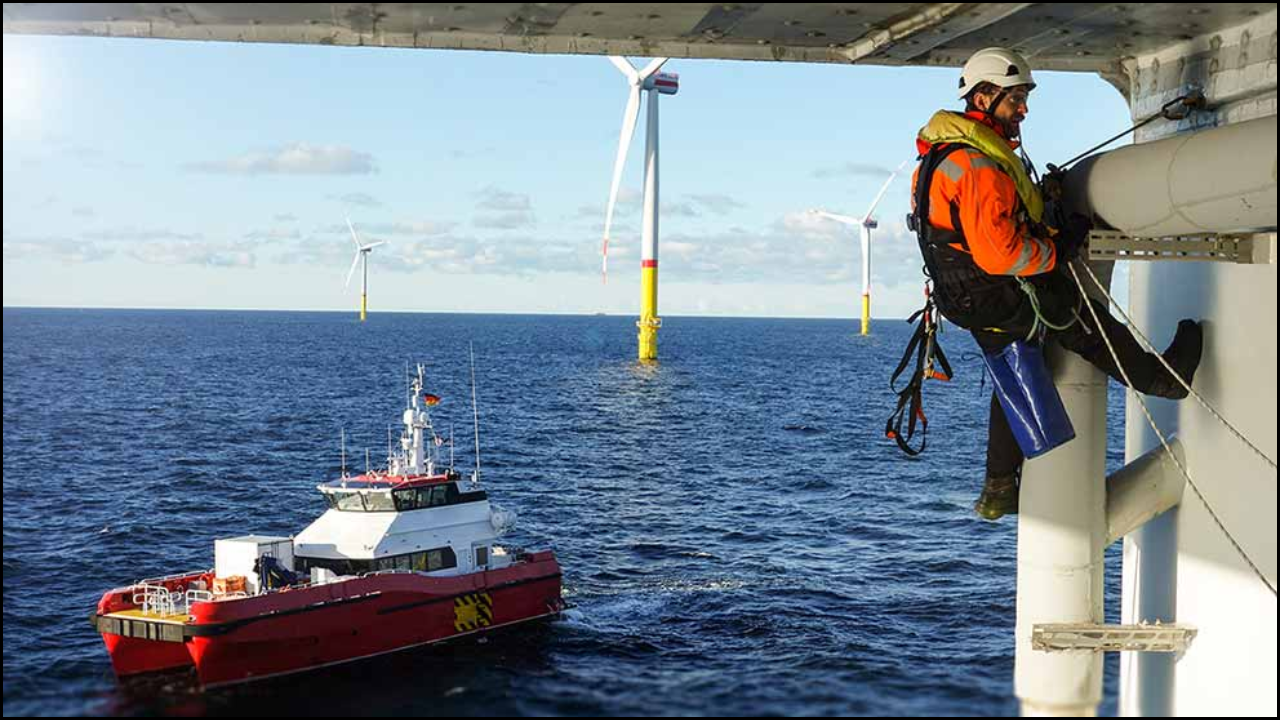
Offshore renewable energy systems play a crucial role in meeting the world’s growing demand for clean and sustainable power. Continuous monitoring of offshore wind, tidal, and wave installations ensures efficiency, reliability, and safety. Smart sensors and artificial intelligence (AI) have transformed how these systems are managed by providing real-time data, predictive insights, and autonomous decision-making capabilities. The integration of sensor technology and AI analytics has minimized maintenance costs, reduced human intervention, and enhanced overall energy production. The combination of intelligent sensing networks and machine learning has become the backbone of the digital transformation in offshore energy.
Table of Contents
Role of Smart Sensors in Offshore Energy Systems
Smart sensors act as the eyes and ears of offshore energy systems. They collect and transmit data from various components to ensure that operations remain stable and optimized.
- Sensors detect temperature, vibration, humidity, and pressure changes in equipment.
- Real-time monitoring identifies potential faults before they escalate.
- Environmental sensors measure ocean currents, salinity, and wave motion.
- Wireless sensor networks (WSNs) provide continuous communication across installations.
- Integrated sensors enhance structural health monitoring of turbines and subsea foundations.
Types of Smart Sensors Used in Offshore Applications
Different types of smart sensors are designed to withstand marine conditions and monitor diverse aspects of offshore systems.
| Type of Sensor | Primary Function | Application Area | Benefits |
|---|---|---|---|
| Vibration Sensors | Detect mechanical vibrations and imbalances | Wind turbines, tidal turbines | Early fault detection and performance optimization |
| Temperature Sensors | Measure heat variations in equipment | Gearboxes, generators | Prevent overheating and energy loss |
| Pressure Sensors | Monitor pressure changes in fluids and air systems | Hydraulic and subsea systems | Maintain system safety and efficiency |
| Corrosion Sensors | Track material degradation | Offshore platforms and blades | Extend structural lifespan |
| Acoustic Sensors | Capture underwater sound waves | Tidal and wave systems | Detect cavitation and marine activity |
| Environmental Sensors | Record ocean and weather data | All offshore sites | Enable adaptive power generation control |
Integration of AI in Offshore Monitoring Systems
Artificial intelligence adds intelligence to the data collected by sensors. It interprets information, detects patterns, and recommends corrective actions.
- AI algorithms analyze large volumes of sensor data in real time.
- Machine learning identifies anomalies and predicts potential failures.
- Deep learning models classify sensor inputs for accurate diagnostics.
- AI-driven dashboards offer visual performance insights for operators.
- Predictive maintenance powered by AI reduces downtime and repair costs.
Applications of Smart Sensors and AI in Offshore Energy
The collaboration between sensor networks and AI systems supports every stage of offshore energy production, from monitoring to maintenance.
- Offshore Wind Farms – Smart sensors track blade stress, wind speed, and tower vibrations. AI systems predict performance degradation and schedule repairs.
- Tidal Energy Systems – Sensors detect changes in tidal currents, while AI optimizes turbine positioning for maximum energy yield.
- Wave Energy Converters – Pressure and motion sensors record ocean wave patterns. AI algorithms determine optimal operating parameters.
- Subsea Cables and Structures – Corrosion and temperature sensors ensure cable integrity. AI predicts damage risk due to marine growth or shifting sediments.
Benefits of Smart Sensors and AI in Offshore Energy Monitoring
The integration of these technologies delivers measurable benefits for operational performance and sustainability.
| Benefit | Explanation |
|---|---|
| Enhanced Safety | Real-time monitoring prevents hazardous failures and minimizes human exposure. |
| Predictive Maintenance | AI anticipates faults before they occur, reducing unscheduled downtime. |
| Cost Efficiency | Automated systems lower inspection costs and extend equipment life. |
| Environmental Protection | Sensors help maintain eco-friendly operations by tracking marine impact. |
| Optimized Energy Output | AI adjusts turbine or generator performance to match environmental conditions. |
| Remote Operation Capability | Offshore systems can be monitored from onshore control centers. |
Technological Innovations in Offshore Monitoring
Continuous research has introduced advanced features to enhance offshore energy monitoring systems.
| Innovation | Description | Impact |
|---|---|---|
| IoT-Enabled Sensors | Integration of smart devices using wireless communication | Seamless data transfer and real-time monitoring |
| Digital Twin Technology | Creation of a virtual model of the offshore system | Enables performance simulation and predictive analysis |
| Edge Computing | Local data processing near the source | Reduces latency and enhances data security |
| AI-Driven Fault Diagnosis | Automated detection and classification of anomalies | Faster maintenance and repair response |
| Energy Harvesting Sensors | Sensors powered by renewable sources | Ensures continuous operation without external power supply |
Challenges in Using Smart Sensors and AI Offshore
Despite their advantages, implementing smart technologies in offshore environments involves certain limitations.
| Challenge | Description | Possible Solution |
|---|---|---|
| Harsh Marine Conditions | Corrosion, saltwater, and pressure can damage sensors | Use of protective coatings and durable materials |
| Data Overload | Large data volumes may strain processing systems | Use of AI-driven data filtering and edge analytics |
| Power Supply Limitations | Continuous energy for sensors is difficult to maintain | Renewable-based self-charging sensors |
| Communication Barriers | Weak signals in deep waters affect data transmission | Use of acoustic modems and satellite communication |
| High Initial Investment | Advanced sensors and AI systems are expensive | Shared monitoring networks and public-private funding |
Case Examples of Smart Sensor and AI Deployment
Practical implementations of sensor-AI integration show its potential to revolutionize offshore operations.
- North Sea Wind Farms (Europe) – Smart sensor networks with AI monitoring systems detect blade erosion and foundation stress, reducing maintenance visits by 30%.
- Japanese Tidal Energy Project – AI-powered underwater sensors predict turbine fouling and adjust positioning automatically.
- US Offshore Platforms – Predictive analytics detect generator wear, improving reliability and extending turbine life.
Impact on Sustainability and Efficiency
The deployment of smart sensors and AI enhances environmental and operational sustainability.
- Reduced need for manual inspections decreases fuel emissions from maintenance vessels.
- Real-time monitoring minimizes the risk of oil leaks or mechanical failure.
- Continuous data analysis ensures efficient use of marine resources.
- AI-supported systems optimize energy production while preserving marine biodiversity.
Future Trends in Offshore Energy Monitoring
Future innovations will focus on autonomy, data integration, and eco-friendly operations.
- Fully Autonomous Systems – AI-controlled robots will handle inspections without human involvement.
- Integrated Sensor Networks – Multi-sensor systems will provide holistic monitoring of offshore sites.
- Advanced Predictive Models – Machine learning will enhance accuracy in maintenance forecasting.
- Green-Powered Sensors – Solar, tidal, and wave-powered sensors will support self-sustaining monitoring.
- Collaborative AI Platforms – Global data-sharing initiatives will improve design and operational standards.
Comparison Between Traditional and AI-Based Monitoring Systems
| Aspect | Traditional Monitoring | AI-Based Monitoring |
|---|---|---|
| Data Processing | Manual analysis | Automated and predictive |
| Maintenance Planning | Reactive after failure | Predictive and preventive |
| Human Involvement | High requirement | Minimal intervention |
| Response Time | Slow and delayed | Instant alerts and actions |
| Operational Cost | Higher due to labor and transport | Lower long-term costs |
In Summary
Smart sensors and artificial intelligence have become vital tools for monitoring offshore renewable energy systems. Their integration ensures operational reliability, safety, and sustainability while reducing costs and environmental impact. The shift from manual inspection to automated intelligence-driven monitoring marks a new era of digital transformation in the offshore energy industry. The future of offshore energy lies in smarter, connected systems that use data, analytics, and intelligent automation to power a cleaner and more efficient global energy network.





